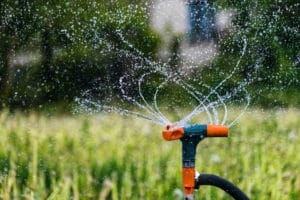A beautiful, strong, velvety, green lawn is hard to achieve – to get that, you will need the right combination of water, sunshine and fertilization, and it helps to plant a drought tolerant grass. While there is not much you can do about the amount of sunshine that your lawn gets, you can certainly ensure proper hydration, by finding the best time of the day to water your grass.
When it comes to the secret life of your leaves of grass, you must know that they need water, comfortable warmth as well as airy dryness. The perfect time of the day to water your lawn is in the early morning, when the air is not unbearably hot yet, but already warm; when the sun’s rays are not very harsh, but already strong. Watering the lawn in the morning will allow the grass to make the most of the life-giving moisture during the day and will allow the lawn to become somewhat dry by the time that the air becomes moist again in the evening.
When you water the lawn, you need to figure out the right amount of water to be sprinkled on your lawn, too. Try not to overdo it: water until the level of the water reaches about one inch on the soil, not more.
